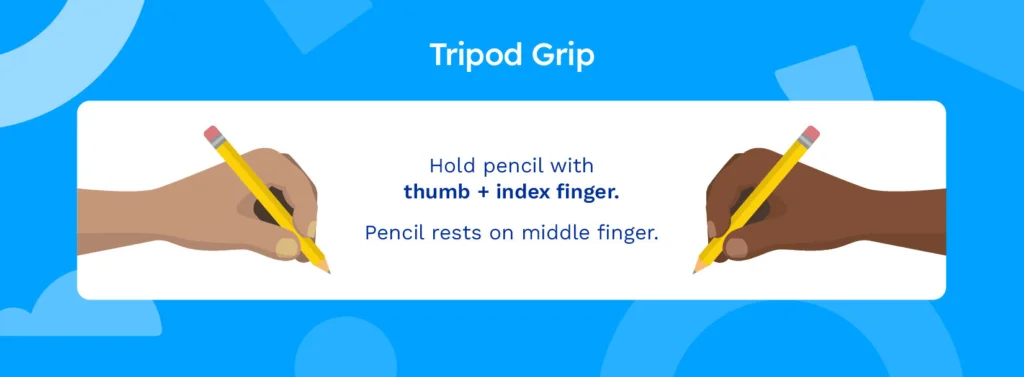In the context of literacy skills and at its most basic level, writing refers to the ability to translate oral language into written language. It’s sometimes called encoding, and it can be thought of as the opposite or inverse of decoding. Writing begins with the basic skill of letter formation — handwriting — and proceeds to the act of conveying thoughts, ideas, and information through written language. It is a fundamental component of communication and an essential life skill.
Fundamentals of Handwriting
As early as pre-k, children are beginning to learn and develop the foundational skills for letter formation. Here are some skills you’ll cover in formal instruction with kindergartners:
- Proper Grip — Learning the proper grip of a pencil helps children get on the road to writing as fluidly and efficiently as possible. You’ll need to model proper grip for them. Also, early kindergarten is a good time to let them experiment with left/right hand preference, if they haven’t settled on one.


